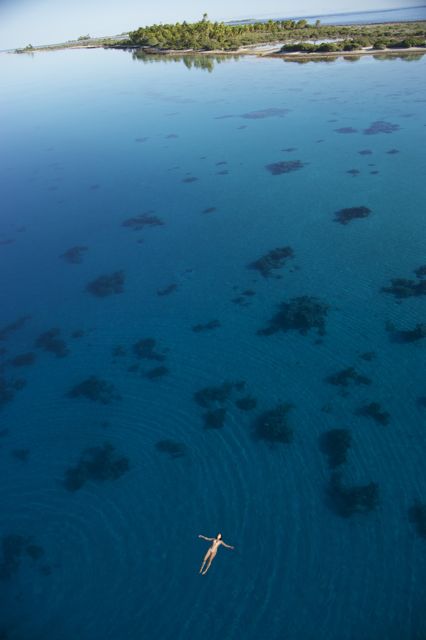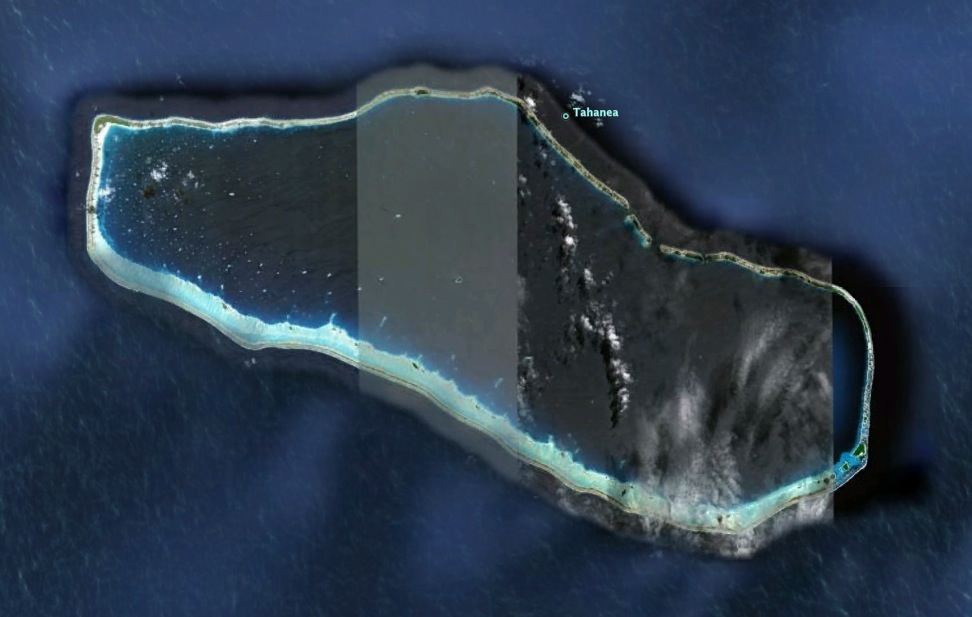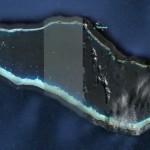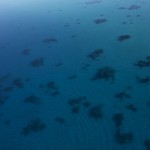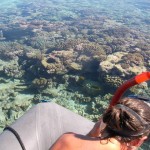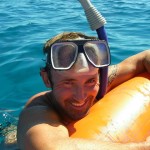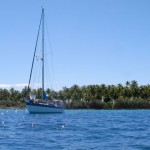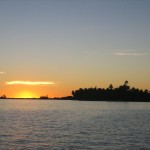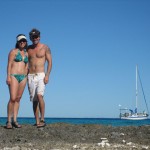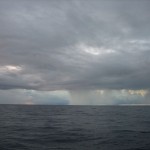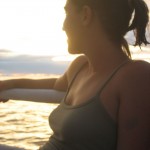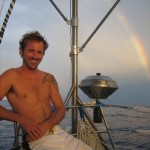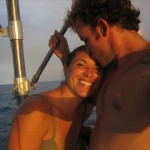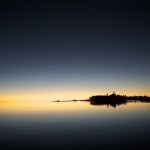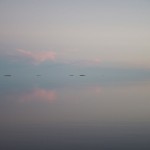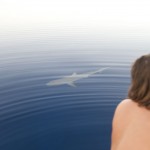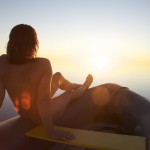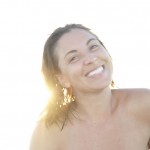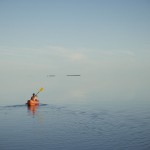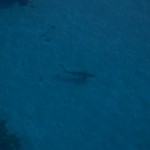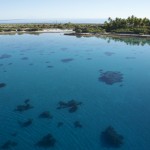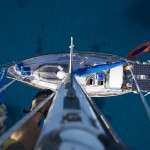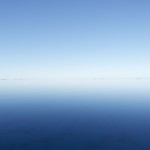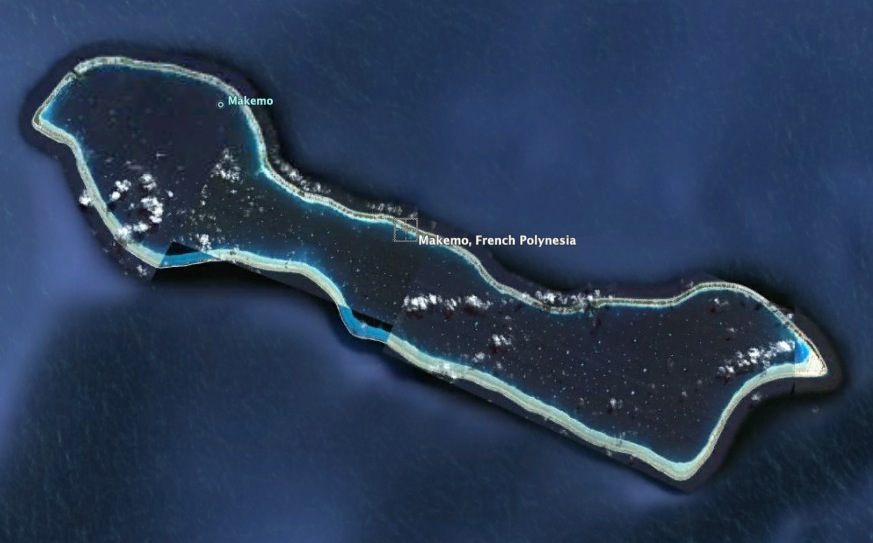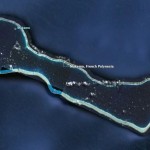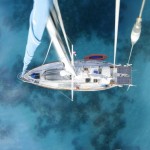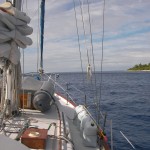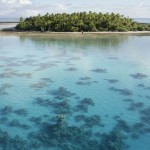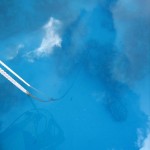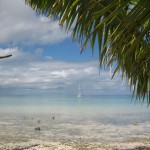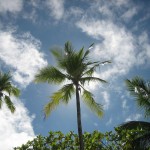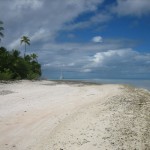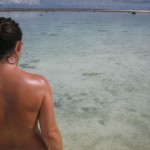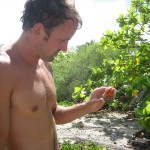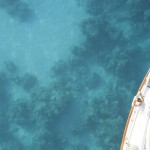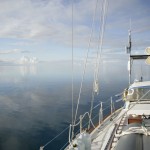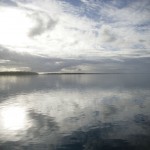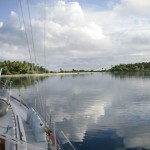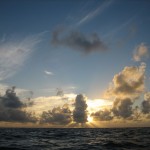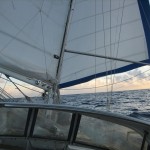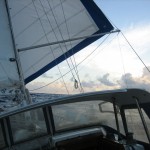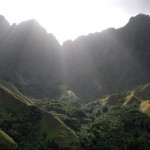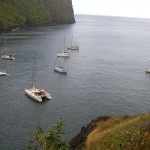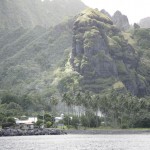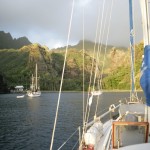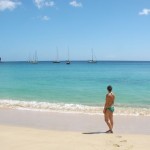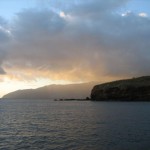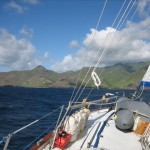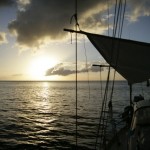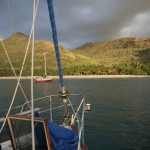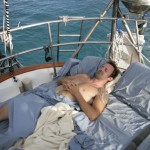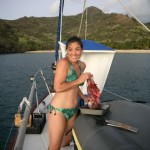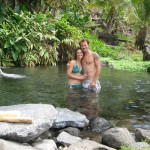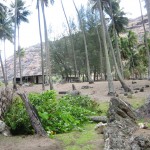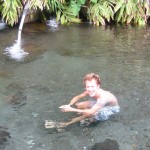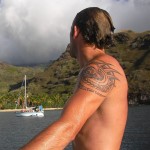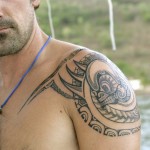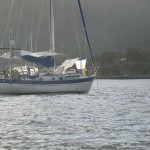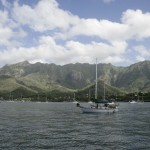POST DATED
(Written on 5/22)
Nuku Hiva provided a nice sheltered anchorage for us to recuperate from 25 days at sea. I can’t say that it’s the sort of paradise that I’ve been dreaming about: Taiohae bay, where we sat around for a few weeks (with the brief excursion to Hakatea in the middle) has rocky black beaches and cloudy opaque brown water. Now you know we’re all thinking of perfectly clear turquoise water and white sand beaches, and we also know the south pacific has such places (bring it on). The town was small, not tiny. It had one restaurant (serving pizza for the white peeps), one resorty-type hotel, two small grocery stores, a basic hardware store, a few trinket shops, a large school, a church, and two food trucks that would park along the waterfront (which served an excellent burger). The french have fully modernized this place; everything is clean and current. It’s really hard to believe the last reported case of cannibalism was only 80 years ago! Everyone drives pickups or suvs, the grocery stores have all the usual products (just smaller selection). There are plenty of cell phones and satellite dishes. The most exotic aspect of the place is how many chickens, hens, horses, and dogs everyone seems to have on their properties. But aside from the animals running around it feels like it could be a town somewhere in europe, populated with dark-skinned marquesans of course. Granted, this town of Taiohae is the largest in the Marquesas, and the administrative center, so it is unlikely that the other bays and islands are as familiar-feeling as this place is.
Neither is it as tropical as I expected. Supposedly some of the more southern islands we will visit are closer to the rainforest jungle feel that I had imagined. On Nuku Hiva there is a mix of low scrub and palm tree forest; some hillsides are covered with palm trees, others look not unlike the side of a mountain in utah with scraggly brush struggling to find moisture.
The terrain is pretty impressive–although the island is small, the hills are steep, and it looks like you could have some really exciting times negotiating the dirt roads that go over the mountains during the muddy season.
Yeah but now let’s talk about how I got a tattoo. I have been talking about getting one for years; multiple times I’ve tried to come up with my own design, but a) there never seemed to be sufficient meaning to it and b) my designs looked stupid. Now that I’ve crossed the pacific ocean, I felt that a Marquesan tattoo would be extremely meaningful and relevant. Brice is a marquesan who studied his tattooing craft in france, and it seemed like everyone was visiting him to get their tattoos. His tattoos are a modern take on the traditional marquesan symbols, and I was impressed with all the tattoos he had done for other cruisers.
The traditional marquesas tattoos are very geometric and symmetric, consisting of dozens or hundreds of smaller symbol elements. The smaller elements are built up in geometric blocks and rows and columns (more or less) to build the tattoo. It requires a big area to get the full effect of an old-school marquesan tattoo–the negative space is as important as the actual inked areas, and ideally there are no edges. The Marquesan warriors would have entire limbs covered, often their entire body (including the face). You can count me out of the whole body option . . .
ironic that despite the years of thinking about what tattoo I wanted, when it came down to it I ended up being impulsive and spontaneous about it. I felt strangely willing to give him free rein and see how it turned out. Formerly, the design of the tattoo had clearly been in the detailed and anal part of my personality, and somehow it ended up in the impulsive, leap-before-looking part of me. Perhaps the recklessly impulsive element is a necessary condition for obtaining a tattoo–how many people do you know that plan every last detail of their tattoo design and still end up with one? It doesn’t do to think about it too much, if you actually want to end up with a tattoo. Another factor was that Brice speaks no english and I lack the vocabulary in french to talk about anything as complicated as designing a tattoo, so I couldn’t really communicate anything to him anyway. In the end, I just wanted something that looked great–it was enough meaning for me that I would end up with a Marquesas tattoo after crossing an ocean. So I pointed at some pictures, made some miming gestures, and submitted my shoulder to an act of chance.
So how did it turn out? Well it’s pretty bad-ass, if I do say so. Brice used the individual symbols that comprise the traditional designs, incorporating them into a more flowing, dynamic container, rather than the straight-edged blockiness of the ancient style. A scary looking tiki dominates the center, with a spiral of traditional marquesan symbols around the outside. Among others, he used the symbols for waves, sky, the “marquesan symbol”, the “warrior symbol”, love and sex, me and karen. And I got some spiky-things as an added bonus. Karen ended up getting one also–a small one on her back, much more elegant and feminine than mine 
So we’ve wrapped up with Nuku HIva. All in all, it was wonderful to be sitting at anchor being lazy for a few weeks, not getting tossed around out in the ocean, but we’re eager to visit the more exotic and exciting islands down the road. Moving on!
